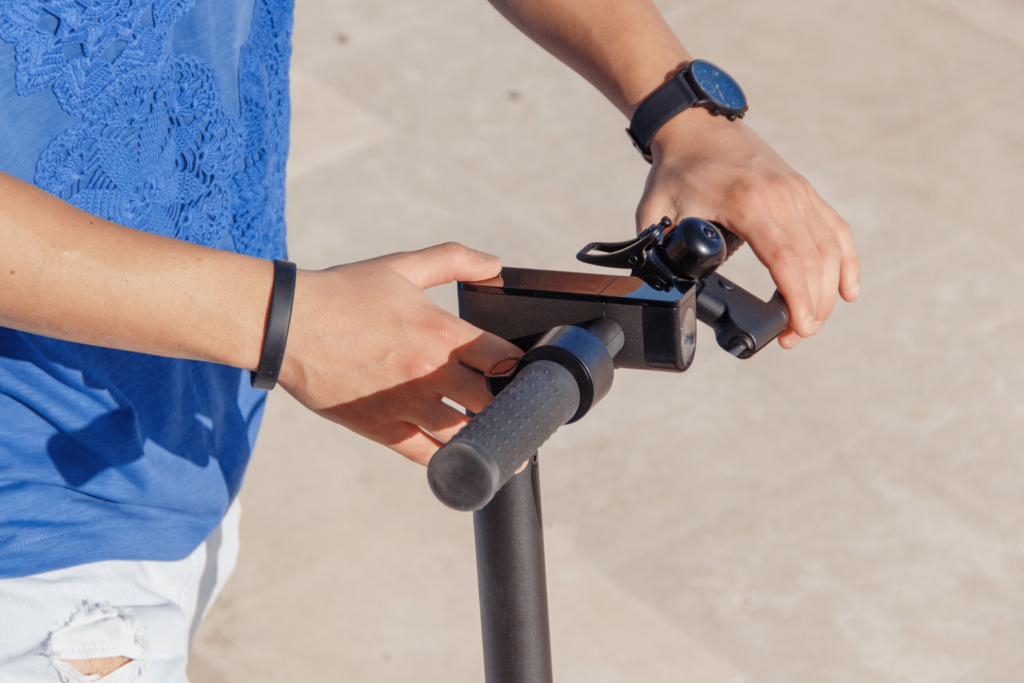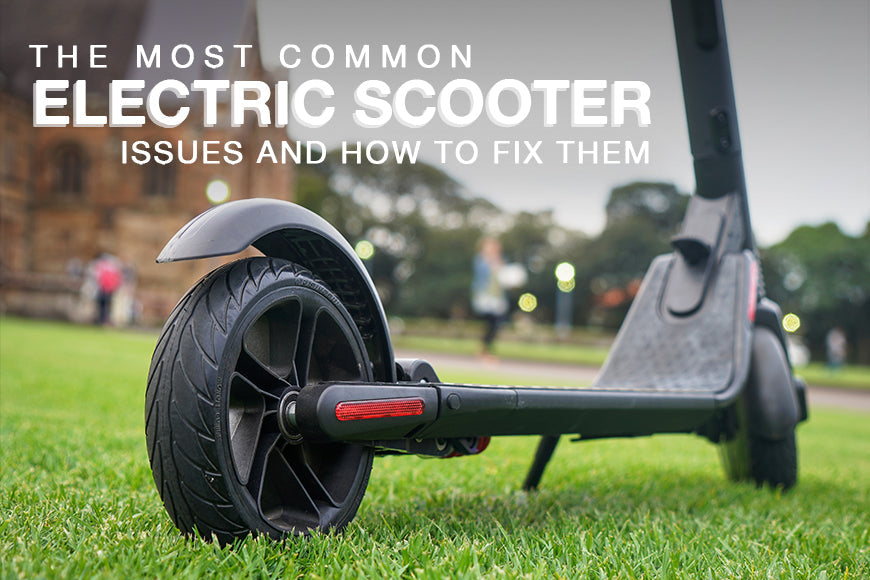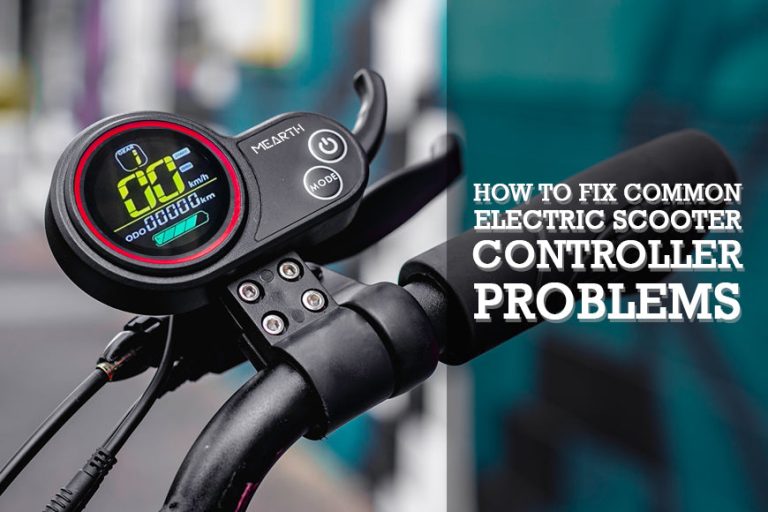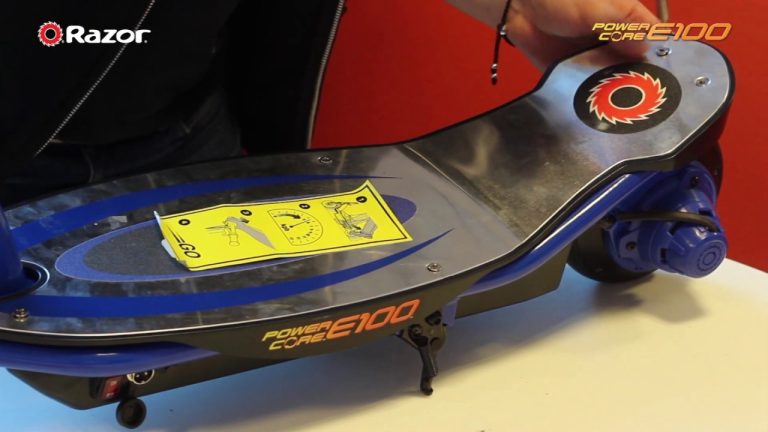Why is My Electric Scooter Not Turning on
Your electric scooter may not turn on due to a dead battery or a faulty power switch. Check these components first.
Electric scooters offer a convenient and eco-friendly mode of transportation. However, issues may arise, leaving you puzzled about why it won’t power up. Common reasons include a drained battery, a malfunctioning power switch, or loose wiring connections. Regular maintenance and timely checks can help prevent such problems.
Inspecting these areas can save you time and frustration. Often, the solution is simpler than you think. Ensuring your scooter is in good condition enhances its longevity and performance. Understanding these basics will help you keep your electric scooter running smoothly.

Credit: www.envirorides.co.uk
Introduction To Electric Scooter Troubles
Electric scooters are fun and useful. A non-responsive scooter can ruin your day. It can happen suddenly. You are ready to ride, but it won’t start. This can be very frustrating. Many people face this issue. It is important to know why it happens. It helps in fixing the problem quickly.
Imagine being late for school or work. Your electric scooter does not turn on. You are left stranded. This is a common problem. It can make you feel helpless. Sometimes, the issue is minor. Other times, it is more complex. Knowing the cause can save you time and stress.
Many think a dead scooter means a dead battery. This is not always true. Battery issues are common but not the only cause. Loose wires can also stop the scooter. Another misconception is that scooters are hard to fix. Many problems are simple to solve. Knowing the real issue is key. It helps in finding the right solution quickly.

Credit: www.youtube.com
Initial Assessment
Check if the power switch is on. Look at the battery level indicator. Make sure the scooter is fully charged. Examine the wiring for any obvious damage. Ensure that the brake lever is not stuck. Verify that the key is inserted properly. These steps can help find the issue quickly.
Wear protective gloves before starting. Make sure the scooter is turned off. Keep the scooter on a stable surface. Use a well-lit area for better visibility. Keep tools handy but away from children. Follow these steps to stay safe.
Battery Issues
Check if the battery is properly connected. Loose connections can cause problems. Make sure all wires are secure and in place. Inspect the battery terminals for corrosion. Clean them if needed. Use a cloth to wipe away any dirt.
A low battery charge can stop your scooter from turning on. Check the battery charge level. Use a multimeter to measure voltage. A low reading means the battery needs charging. Charge the battery fully before trying again. If the battery still does not work, it might be time for a replacement.
Power Problems
Check if the charger is working. Plug it into the scooter and an outlet. Look for any lights on the charger. These lights show if it is charging. If no lights are on, the charger might be broken. Try using another charger to see if it works. Make sure the outlet is also working by plugging in a different device.
Find the reset button on your scooter. This button is usually near the power switch. Press and hold the reset button for a few seconds. Release the button and try turning on the scooter. This can fix many minor issues. If it still does not turn on, there may be a bigger problem.
Electrical Failures
Electric scooter won’t turn on due to battery issues, faulty wiring, or a damaged power switch. Check connections and charge the battery.
Fuses And Circuit Breakers
Fuses and circuit breakers protect the scooter’s electrical system. A blown fuse can stop the scooter from turning on. Check the fuse box and replace any blown fuses. Circuit breakers might also trip, cutting off power. Reset any tripped circuit breakers to restore power.
Wiring Inspection And Fixes
Loose or damaged wires can cause power issues. Inspect the scooter’s wiring for any signs of wear or damage. Tighten any loose connections to ensure proper contact. Replace any frayed or broken wires to restore power flow. Proper wiring is crucial for the scooter’s operation. A well-maintained electrical system ensures reliable performance.
Motor Malfunctions
Experiencing issues with your electric scooter not turning on can stem from battery problems, loose connections, or a faulty power switch. Regular maintenance and thorough inspection help identify and resolve these common motor malfunctions.
Recognizing Motor Symptoms
The motor may produce unusual sounds. These sounds include grinding or clicking noises. A burning smell can also mean motor trouble. The scooter might not accelerate properly. The motor may feel hot to the touch. These signs suggest a problem with the motor.
When To Seek Professional Repair
If you notice any of these symptoms, it is best to seek help. A professional can diagnose the issue quickly. They have the right tools and knowledge. Fixing the motor yourself can be risky. It may cause more damage. Always consult an expert for major repairs.
Control Panel And Display Issues
Electric scooters often have display codes. These codes help in identifying issues. Check the display screen for any error codes. Each code represents a specific problem. Refer to the scooter’s manual to decode these errors. This step can help you identify the exact issue quickly.
The control module is the scooter’s brain. It manages all electronic functions. First, inspect all connections for any loose wires. Ensure that all plugs are securely connected. Next, check if the module itself is damaged. Sometimes, a simple reset can solve the problem. Disconnect the module’s power for a few minutes. Reconnect and check if the scooter turns on.
Environmental And Usage Factors
Exposure to extreme weather conditions can affect your electric scooter’s performance. Prolonged usage without proper maintenance may lead to battery issues. Ensuring regular checks and safe storage helps maintain functionality.
Weather-related Complications
Electric scooters can be affected by extreme weather conditions. Rain can cause water to get into the scooter’s parts. This can damage the battery and electronics. Cold weather can also cause problems. Batteries don’t work well in very cold temperatures. Always check the weather before using your scooter.
Impact Of Improper Storage
Storing your scooter in a poor environment can cause issues. If left in a damp place, it can rust. Rust can damage important parts. Heat can also be a problem. High temperatures can ruin the battery. Store your scooter in a dry, cool place. This will help keep it in good condition.
Maintenance Tips For Prevention
Always check the battery level. Charge it fully before each ride. Clean your scooter every week. Remove any dirt or debris. Inspect the brakes and tires for wear. Replace them if needed. Make sure all lights and signals work correctly. Tighten any loose screws or bolts. Lubricate the moving parts regularly.
If your scooter is old, consider upgrading the battery. New batteries provide better performance. Replace worn-out tires for a smoother ride. Check the brakes often. Upgrade to a better braking system if needed. Look at the motor performance. An old motor might need replacement. Always use quality parts for upgrades.

Credit: www.mearth.com.au
Ensuring Reliable Scooter Performance
Regular maintenance ensures your electric scooter remains reliable. Addressing common issues like battery problems or loose connections can prevent it from not turning on. Keep your scooter in optimal condition for consistent performance.
Summary Of Quick Fixes
Always check the battery first. Ensure it is fully charged and properly connected. Inspect the power switch and make sure it works. Examine all cables and connections for any signs of damage. Look at the fuse or circuit breaker and replace it if needed. Verify the motor and controller for any issues. Reset the scooter by turning it off and on again. These steps can often solve common problems.
The Value Of Professional Servicing
Sometimes, simple checks are not enough. Professional servicing ensures your scooter runs smoothly. Experts can diagnose and fix complex issues. They have the right tools and knowledge. Regular maintenance can prevent future problems. It keeps your scooter in top condition. Investing in professional service can save you money in the long run.
Conclusion
Troubleshooting an electric scooter that won’t turn on can be simple. Start by checking the battery and connections. Regular maintenance can prevent common issues. If problems persist, consult the user manual or seek professional help. Keeping your scooter in top condition ensures a smooth and reliable ride.

